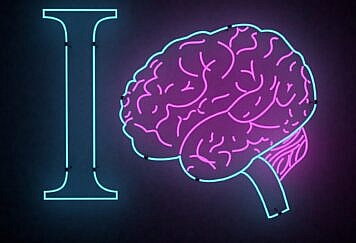The advancements in AI have taken the recruitment process far beyond the initial online applications and initial hiring sessions. Indeed, the focus of many early adopters has shifted towards performance improvement – investing in digital technologies for better insight into how their companies are performing to provide more personalized services. As a result of this increased adoption, employers are placing a greater focus on the emotional side of hiring, reducing the number of resumes they send out, and even experimenting with artificial intelligence.
Many applicants have filled the role, but many have also said they aren’t interested in being interviewed if this sort of personal interaction were not involved. In the next five years, technology will transform almost every aspect of the hiring process. It will become easier to increase the chances of hiring the perfect candidate and scale, ultimately improving the overall employee experience. New technologies will accelerate the speed and reduce friction. They will also accelerate the implementation of better vetting processes.
The Future of Recruitment
Surprisingly, despite advances in technology, the recruitment process is now actually slower than ever. While many organizations use tools that reduce the amount of time spent sourcing candidates and facilitate the selection process from a lengthy blind auction into a transparent experience, the human element is still essential to successful businesses run. This includes everything from project managers to recruiters, who are charged with managing relationships with potential candidates.
While there is artificial intelligence, the real future of digital transformation lies in harnessing it. One of the more profound predictions about where AI will go next in the next few years comes from a recent report from McKinsey, which suggested that around 50% of work activities will be fully automated in the next five years, as opposed to the current 10%. However, not all industries are at a stage where digital automation is expected to begin transforming how they recruit and hire.
Different Ways in Which Recruiting Web Developers Will Change
- Companies will be looking to leverage virtual reality for communication and customer acquisition, just like social media platforms already do. More companies will utilize chatbots and artificial intelligence to increase engagement and enhance the overall employee experience. This shift will see companies shift from having a decentralized approach to recruitment to a more complex, vertically integrated one. Rather than sourcing candidates for specific roles, they will be aggregating portfolios from various industries to find the right people to do the right jobs.
- The benefits of using machine learning for recruiting are multi-faceted. Machine learning can alleviate administrative work and give human managers more time to focus on a recruiter’s core competencies. This year, recruiting web developers is on the verge of becoming more effortless than ever before, with more sophisticated and widespread tech tools available for application developers to use, making it possible for hiring managers to source, assess, and hire quickly. Tools like Toptal, Greenhorn, Amrefile, Mastermind, UBS, and Indeed will all play a role in this process, in some cases picking out high-potential candidates and finding more generalist roles for other companies.
- Among the areas of hiring impacted by digital transformation, developers have undoubtedly seen the most dramatic shift. Digital-age jobs in software development are using exponential growth rates and can help companies become more productive and innovative, which means hiring will be a central focus for businesses. However, it’s the sheer scale and complexity of today’s developer job market, which means it’s not just coding. Roles such as network administrator, web designer, and software quality assurance have all seen significant growth, influencing employers to shift recruitment strategies.
Increase in Usage of Recruiter Marketplaces
The increased prevalence of online job boards, like Indeed and Indeed.com, and self-scheduling portals like LinkedIn Recruiter, have given rise to a trend towards ‘professionalizing’ the recruitment process. According to WorkMarket, the number of job boards had reached 133 by 2016, representing 75% of all job boards. Due to the sharp rise, the most crucial shift in the recruitment process is the decrease in hiring managers’ role as the ‘first call’ or ‘front-line recruiter,’ and an increased focus on the team’s performance in the recruitment process.
Many organizations have created recruiter marketplaces to help recruiters find work for their clients and help them find and retain recruits. This means that the gig economy is taking over an ever-increasing portion of the overall recruitment market. Recruiters on the marketplaces provide extensive data on clients and potential candidates, whether they’re job seekers, employers, or consultants. Recruiters also review opportunities to see what clients want in a candidate and tailor their services accordingly. In recent years, numerous businesses started outsourcing more menial tasks to free up more productive work. Among the primary ways to achieve this is by using gig economy platforms to hire freelance talents.
Even as the ‘Digital Mindset’ is popularly associated with the younger workers, the focus has shifted to ensuring an inclusive digital transformation driven by the best of the millennials. New-age talent acquisition approaches, aided by technology and the right hiring and retention strategies, can not only ensure you attract a wider talent pool but also build a culture that welcomes tech-savvy young professionals and plays a crucial role in driving productivity. Across all industries, there is no escaping the idea that jobs are rapidly evolving. Many industries have witnessed or are experiencing a revolution in the digital age, from the rise of self-driving cars to the revolution in mobile technology.
The revolution is being felt at the technological and engineering levels and the consumer level: We are now seeing people share their opinions and videos through apps and wearable devices. Most organizations and industries are seeing this revolution. They are trying to navigate it, whether they are in the process of becoming more digital or planning to make a major transformation. Digital transformation is based on the digitalization of services and organizations and also on introducing automated processes. To hire professional developers, reach out to the High5 developer marketplace.
Follow TechStrange for more Technology, Business, and Digital Marketing News.





